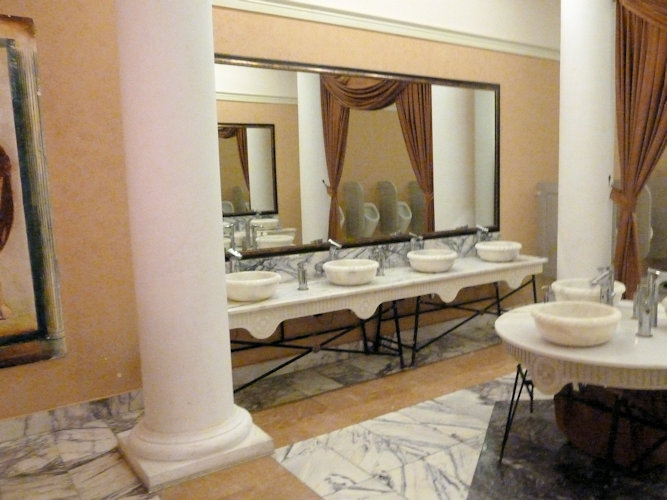

- Believe it or not, those are the men's toilet in the Temple of Artimission. In fact, this restaurant
took its name from the Temple of Artimis in Ephesus.
- Croyez-le ou non, ce sont les toilettes des hommes dans le temple d'Artimission. En fait, ce
restaurant a pris son nom du temple d'Artimis à Ephèse.
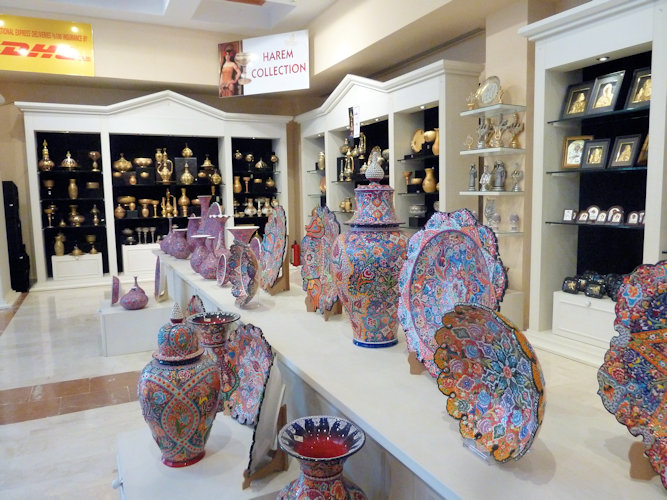

- A part of the store besides the Temple of Artimission where they sell all kinds of Turkish art pieces
and souvenirs
- Une partie du magasin à côté du Temple de Artimission où ils vendent toutes sortes d'oeuvres d'art
turques et de souvenirs
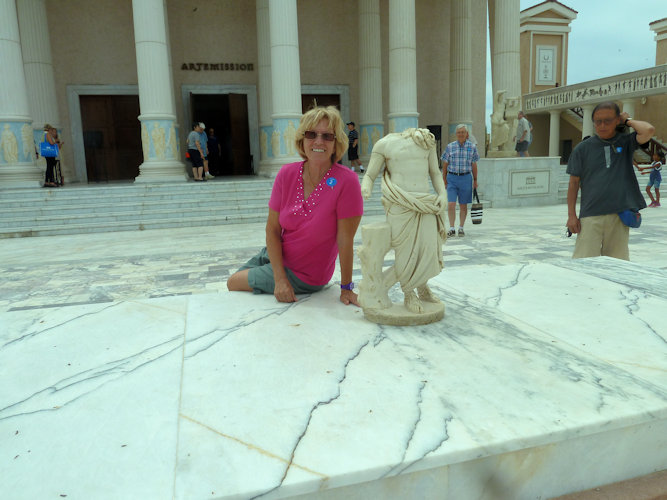

- Nicole in front of the Temple of Artemission near Ephesus in Turkey
- Nicole en face du Temple d'Artemission près d'Éphèse en Turquie
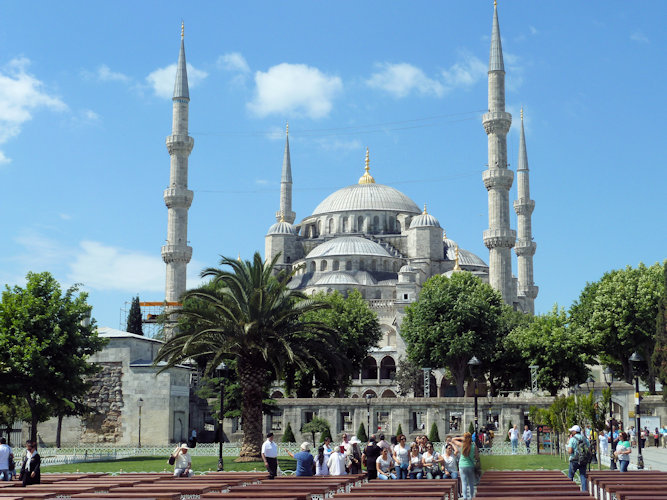

- The Blue Mosque, or Sultan Ahmed Mosque, is a historic mosque in Istanbul, Turkey. The Blue Mosque
was built between 1609 and 1616 during the rule of Ahmed I. It still serves as a mosque today.
- La Mosquée Bleue, ou Mosquée du Sultan Ahmed, est une mosquée historique à Istanbul, Turquie. La Mosquée
bleue a été construite entre 1609 et 1616 sous le règne de Ahmed I. Elle sert encore de mosquée aujourd'hui.
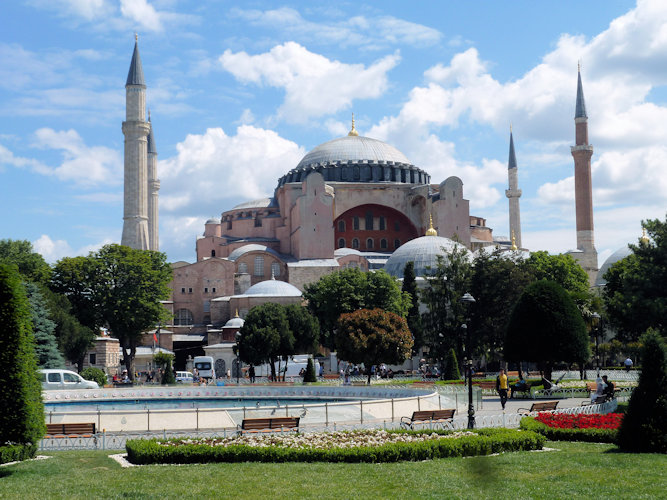

- Hagia Sophia was a Greek Orthodox Christian patriarchal basilica , later an imperial mosque, and
now a museum in Istanbul, Turkey. It was built between 532 and 537.
- Hagia Sophia était une basilique orthodoxe grecque chrétienne patriarcale, plus tard une mosquée
impériale, et maintenant un musée à Istanbul, Turquie. Elle a été construite entre 532 et 537.
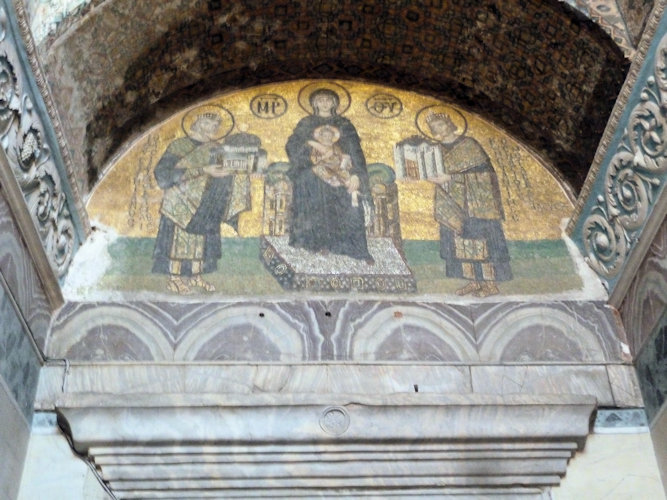

- A mosaic from the 10 Century, with on the right Emperor Constantine holding a model of the city, on the
left Emperor Justinian holding a model of Hagia Sophia, presenting them to the Virgen Mary holding the Child
- Une mosaïque du 10e siècle, avec l'empereur Constantin à droite tenant un modèle de la ville, à gauche
l'empereur Justinien tenant un modèle de Hagia Sophia, les présentant à la Vierge Marie tenant l'enfant
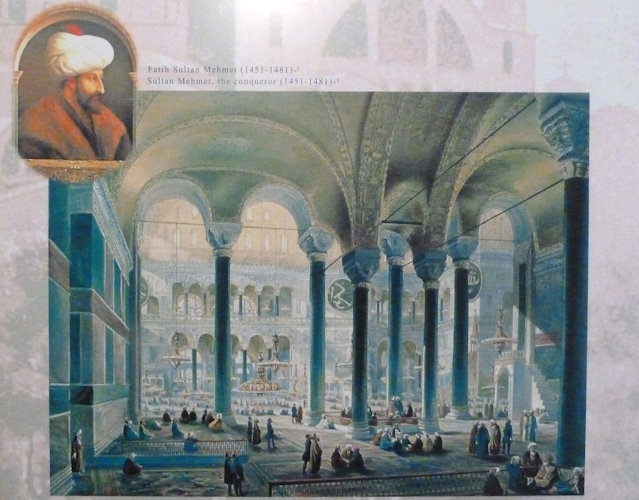

- Fatih Sultan Mehmet, who after the surrender of Constantinople claimed the Hagia Sophia for
the Islamic cult. The first Friday prayer was held on 1 June 1453.
- Fatih Sultan Mehmet, qui après la reddition de Constantinople a revendiqué la Hagia Sophia pour
le culte islamique. La première prière du vendredi a eu lieu le 1er Juin 1453.
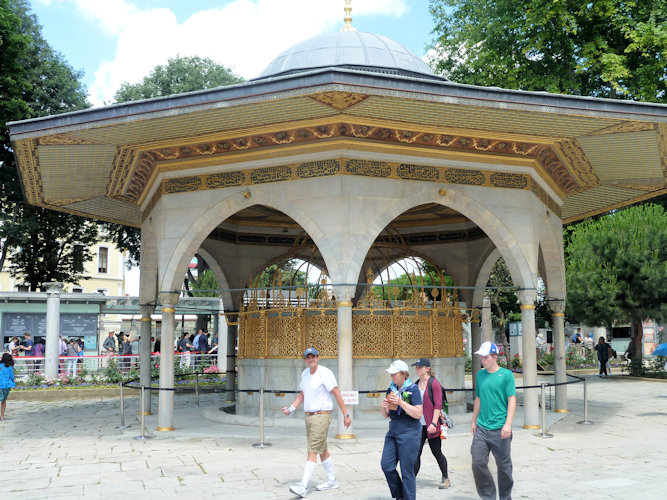

- A fountain (sadirvan) for ritual ablutions in front of Hagia Sophia. It was built in 1740 in the period
of Sultan Mahmud I.
- Une fontaine (sadirvan) pour les ablutions rituelles devant Sainte-Sophie. Elle a été construite en
1740 durant la période du sultan Mahmud I.

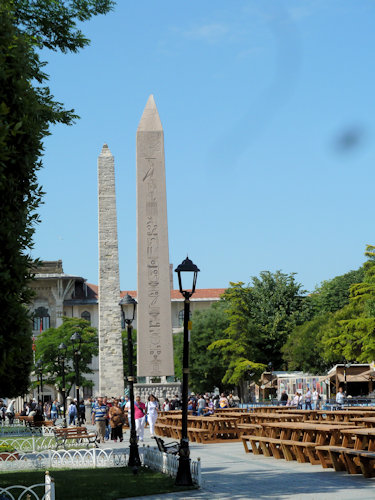

- The Obelisk of Thutmose III in the foreground (1500 BC)
and in the background the Walled Obelisk (10th c.) in Istanbul
- L'obélisque de Thoutmosis III au premier plan (1500 av.
J.-C.)et à l'arrière plan l'Obélisque muré (10e s.) à Istanbul

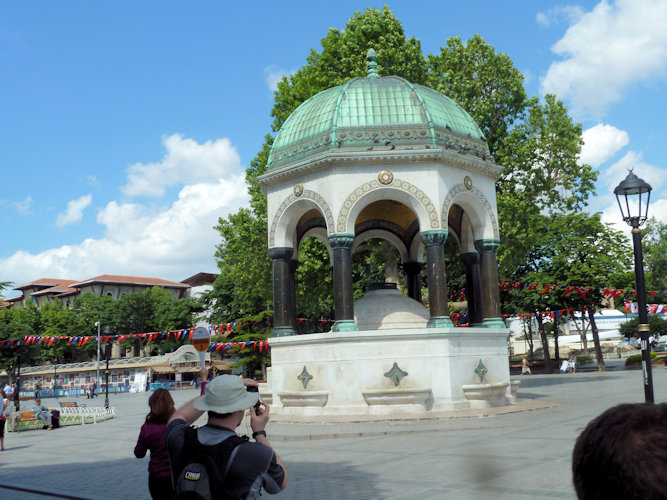

- The German Fountain is a gazebo styled fountain on the old hippodrome (Sultanahmet Square) in
Istanbul. It is a gift from German Emperor Wilhelm II who visited Istanbul in 1898.
- La Fontaine Allemande est une fontaine de style gazebo sur l'ancien hippodrome (Place Sultanahmet)
à Istanbul. Elle est un don de l'empereur allemand Guillaume II qui a visité Istanbul en 1898.
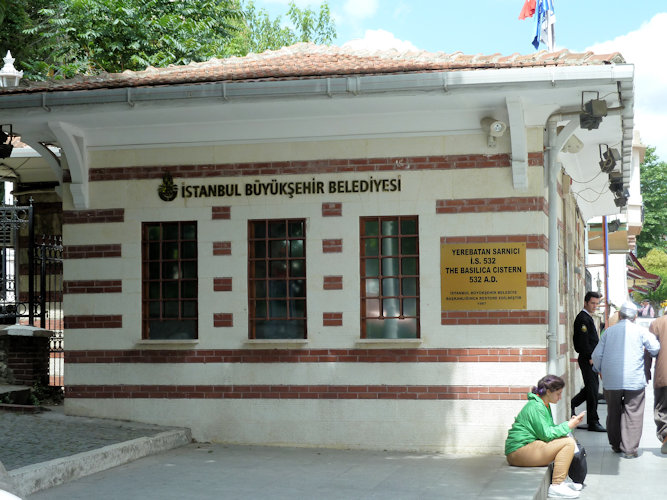

- The entrance to the Basilica Cistern, which is the largest of several hundred ancient cisterns that
lie beneath the city of Istanbul
- L'entrée de la Citerne Basilique, qui est la plus grande de plusieurs centaines de citernes qui se
trouvent sous la ville d'Istanbul
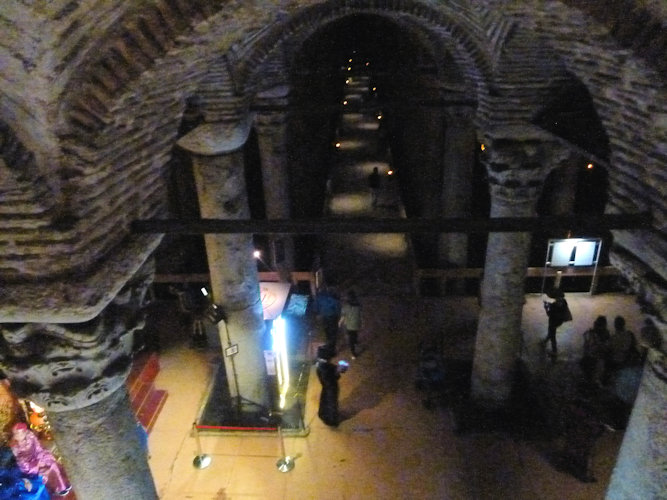

- The Basilica Cistern is located just 150 meters southwest of the famous Hagia Sophia, and was
built by the Byzantine emperor, Justinian I, in 532 AD
- La Citerne Basilique se trouve à seulement 150 mètres au sud-ouest de la célèbre Hagia Sophia,
et fut construite par l'empereur byzantin Justinien I, en 532 apr. J.-C.